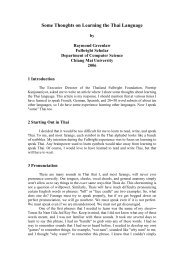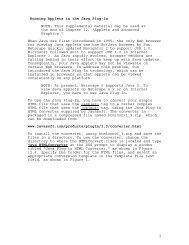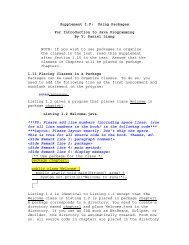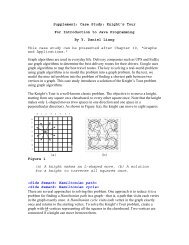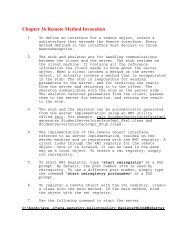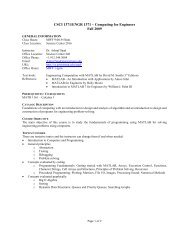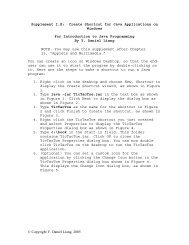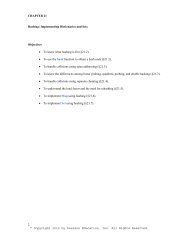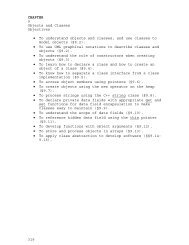CHAPTER 25 Weighted Graphs and Applications Objectives ⢠To ...
CHAPTER 25 Weighted Graphs and Applications Objectives ⢠To ...
CHAPTER 25 Weighted Graphs and Applications Objectives ⢠To ...
Create successful ePaper yourself
Turn your PDF publications into a flip-book with our unique Google optimized e-Paper software.
priority queues, we can implement the algorithm in O(|E|log|V|) time (see Programming Exercise <strong>25</strong>.10),<br />
which is more efficient for sparse graphs.<br />
Dijkstra’s algorithm is a combination of a greedy algorithm <strong>and</strong> dynamic programming. It is a greedy<br />
algorithm in the sense that it always adds a new vertex that has the shortest distance to the source. It stores<br />
the shortest distance of each known vertex to the source <strong>and</strong> uses it later to avoid redundant computing, so<br />
Dijkstra’s algorithm also uses dynamic programming.<br />
PEDAGOGICAL NOTE<br />
Go to www.cs.armstrong.edu/liang/animation/ShortestPathAnimation.html to use a GUI interactive<br />
program to find the shortest path between any two cities, as shown in Figure <strong>25</strong>.20.<br />
Figure <strong>25</strong>.20<br />
The animation tool displays a shortest path between two cities.<br />
Listing <strong>25</strong>.9 gives a test program that displays the shortest paths from Chicago to all other cities in<br />
Figure <strong>25</strong>.1 <strong>and</strong> the shortest paths from vertex 3 to all vertices for the graph in Figure <strong>25</strong>.3a, respectively.<br />
35



